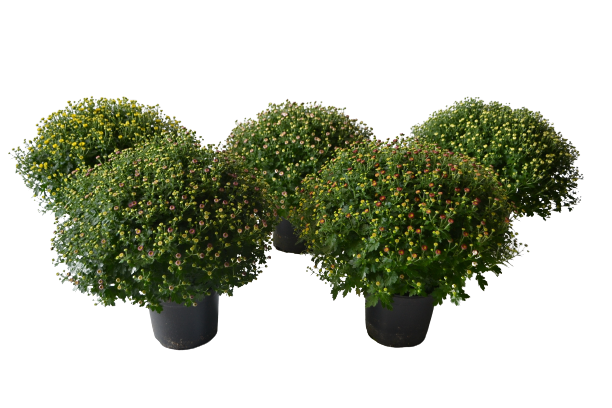17 Jul The season of Chrysanthemum ‘Garden Mums’ starts now!!

Garden mums (Chrysanthemum spp.) are a member of the daisy family and are stalwarts of the flowering autumn garden. Their hardiness and the fact that they can be pinched back during the summer so they won’t bloom until fall, make these jewel-toned beauties a welcome splash in the garden at a time when most summer flowers have faded. These plants grow fast, and should bloom in the first growing season. Bloom times vary with variety and climate from early September through mid-October.
Hardy Chrysanthemum Care
Plant mums as soon as the soil warms in the spring. From late spring to mid-July, shear back the plant to make the it bushier and delay flowering until the fall. For optimal blooming, the plants should be fertilized regularly throughout the growing season. After the blooms fade, cut the plants down to about six inches, and cover them with straw or another dry mulch to protect the roots over winter. Established plants should be lifted and divided every two to three years.
Mums can make a wonderful impact in containers. But when planted in mixed borders, they will end your garden season with a bang. That’s especially true when you pair them with other late-season bloomers, such as sedum, goldenrod, Russian sage, asters, and gaillardia.

Furthermore, because mums flower so late in the season, they are nondescript, though not unattractive, in the garden until blooming time. Thus, they are best planted next to early bloomers. As the spring flowers die back, the mums will fill in and hide their unattractive fading foliage.
Light
Mums thrive in full sun but can handle a bit of shade. Generally, flowering will be most profuse if they are grown in full sun. However, in warm climates, the plants often appreciate some shade during the heat of the afternoon. Mums set buds in response to day length, so avoid confusing them by planting where they might be exposed to bright nighttime light from a patio or window or even a streetlight.
Water

Mums require a lot of water. Give them one inch per week during the early growing season, and then increase this to two or three times a week as the flower buds mature and the flowers begin to open. When growing them in a pot, water the soil surface until moisture begins to drain from the bottom of the pot (make sure the pot has drainage holes). Water should drain freely through the soil and out the bottom of the pot. Soil should remain moist, but not soggy. Soggy soil can cause root rot and other diseases.


